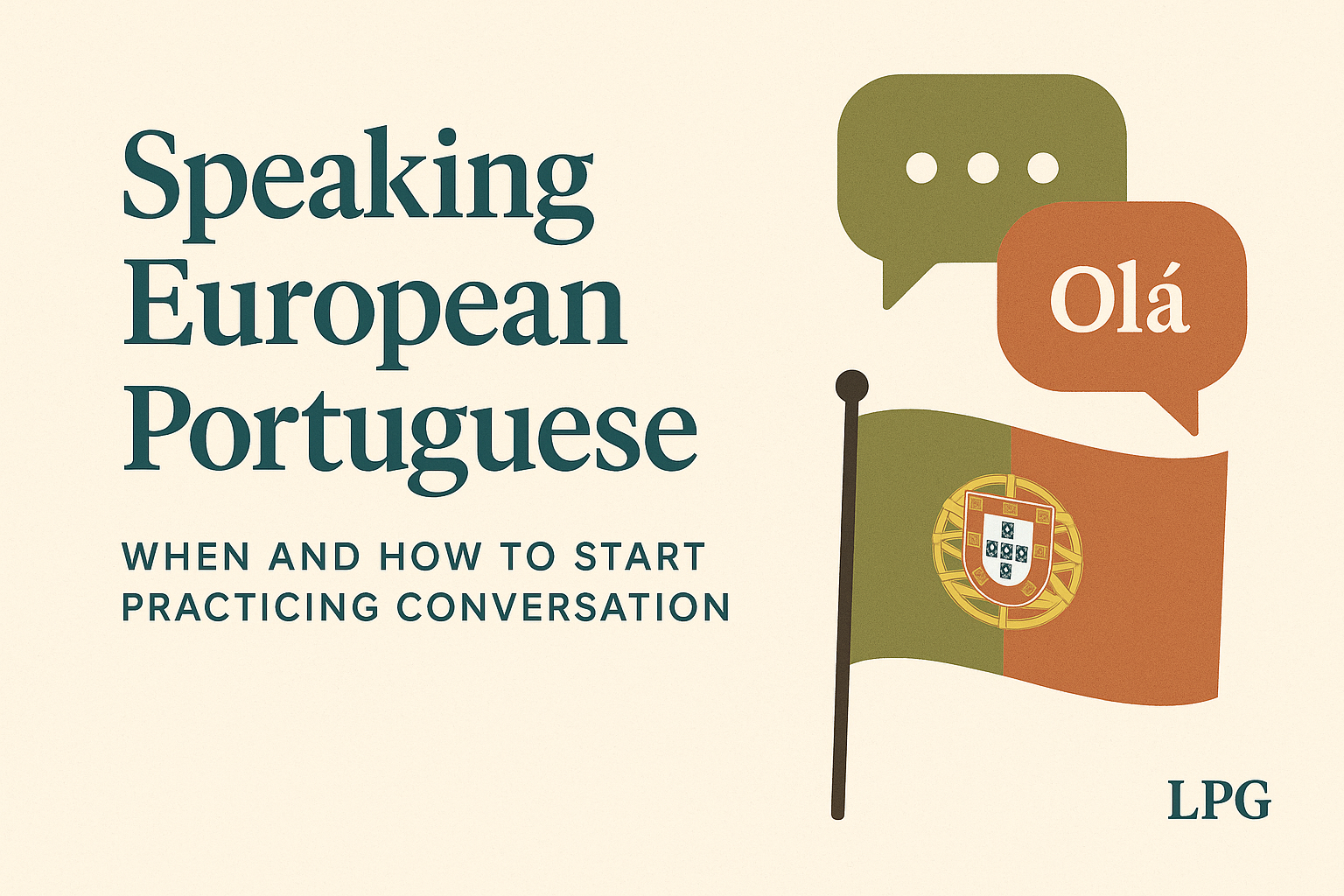
Learning Strategy & Planning
Speaking European Portuguese: When and How to Start Practising Conversation
Speaking is one of the scariest but most rewarding parts of learning European Portuguese. Many learners wait too long, thinking they need to “know more first”.
Here’s the truth: you can start speaking earlier than you think. And doing so will speed up your progress.
🕐 When Should You Start Speaking?
The best time to start speaking is as soon as you know a few basic phrases, even if it’s just “Olá, tudo bem?” or “Como te chamas?”
You don’t need perfect grammar. You don’t need a big vocabulary. You just need willingness to try.
The sooner you get comfortable making mistakes out loud, the faster you’ll improve.
🧠 Step 1: Think in Portuguese First
Before you even speak to someone else, practise thinking in Portuguese.
For example:
- “Estou a cozinhar agora.” (I’m cooking now.)
- “Vou sair às quatro.” (I’m going out at four.)
Say these aloud to yourself to get used to forming real sentences in your head.
🗣️ Step 2: Talk to Yourself (Yes, Really)
Narrate what you’re doing, or describe what you see around you. This builds fluency without pressure.
Try:
- Repeating podcast phrases
- Using new verbs in a sentence
- Shadowing native audio (repeat after it in real time)
👥 Step 3: Use a Speaking Partner or Tutor
When you're ready for interaction, try:
- Language exchange apps like Tandem or HelloTalk
- Online tutors on iTalki or Preply (look for native EP speakers!)
- Conversation prompts (prepare simple answers ahead of time)
Start with short, manageable sessions—10 to 15 minutes is plenty.
😬 What If I’m Too Nervous?
Everyone is! Start small:
- Speak one sentence a day
- Record yourself (no one else has to hear it)
- Use scripts or “cheat sheets” during your first chats
Confidence grows with repetition not perfection.
🎯 Final Thought
Don’t wait until you’re “ready”, you’ll never feel 100% ready.
Start speaking now, even if it’s simple and awkward. Every attempt brings you closer to real fluency.
Ready to practise out loud? Let’s go!